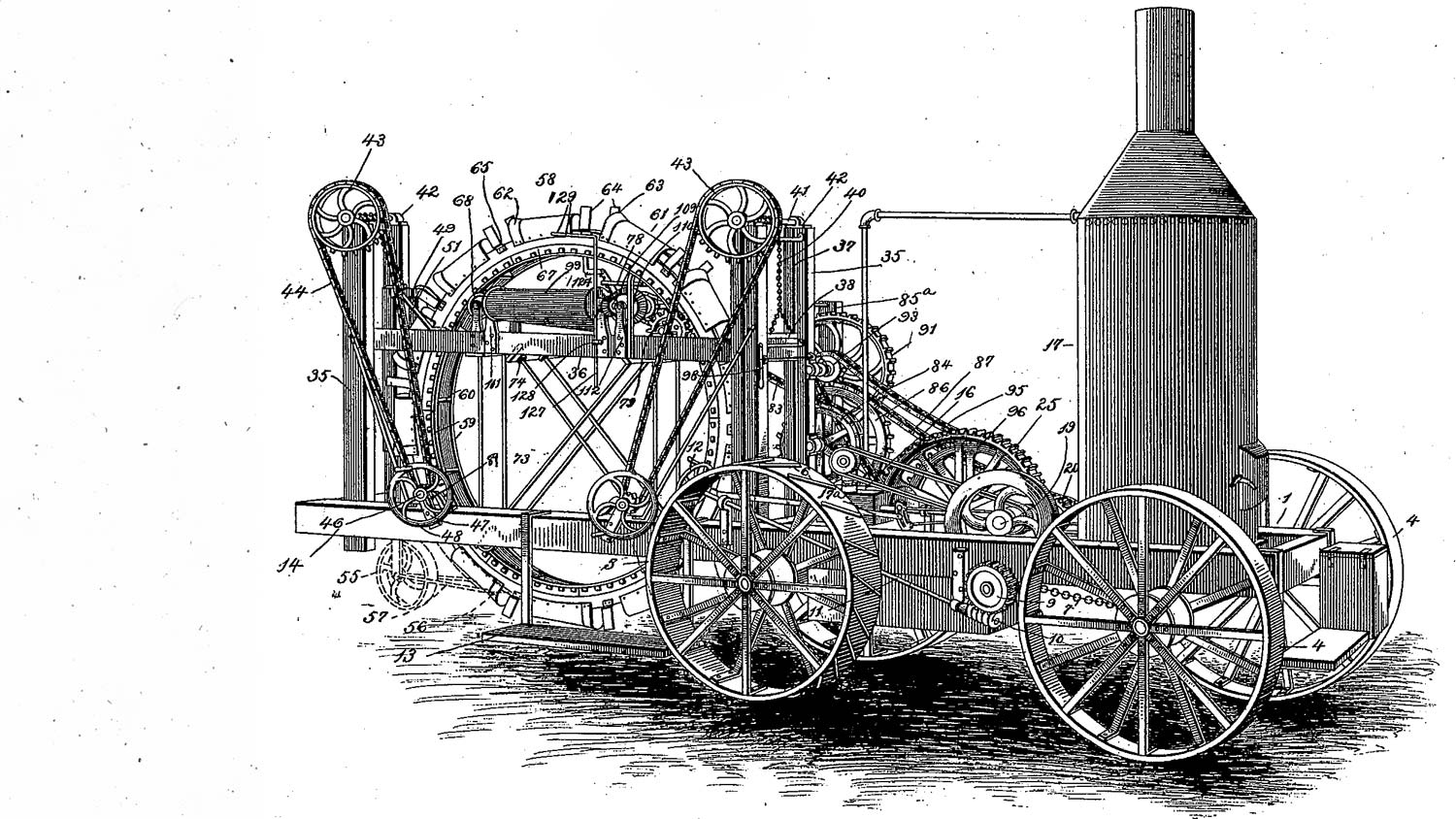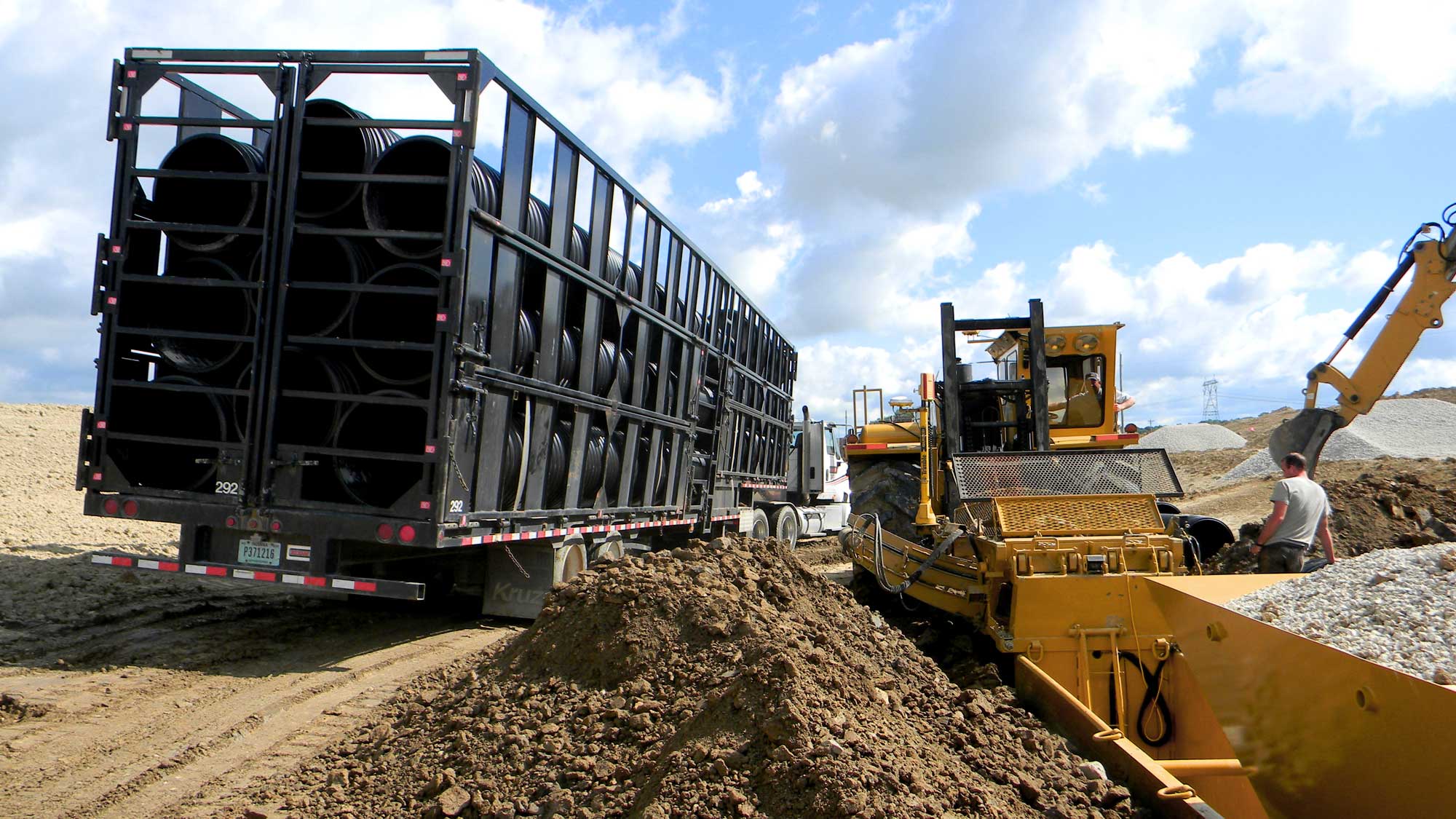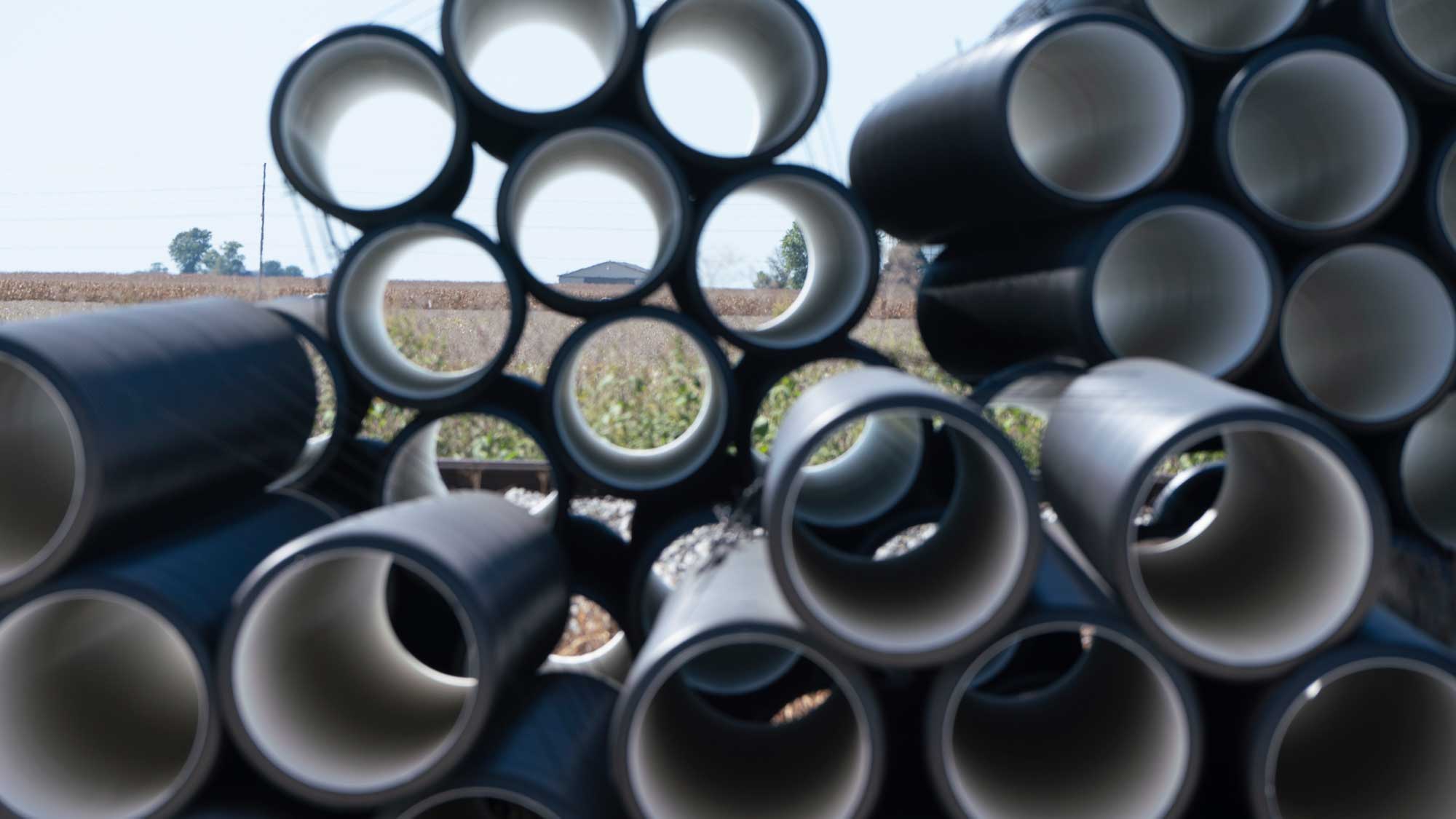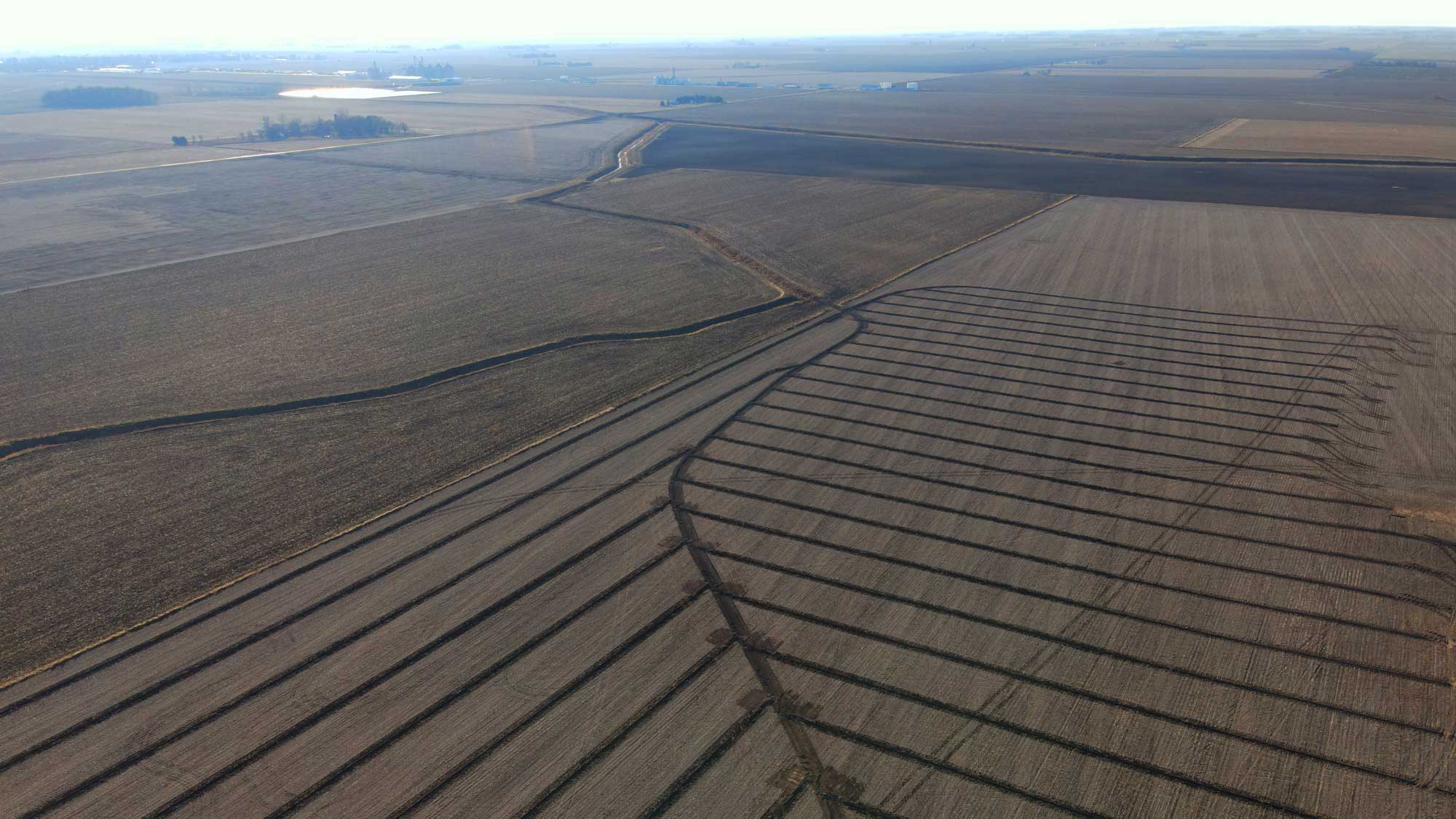James Hill’s patent drawing for the Buckeye No. 88, the ‘Traction Digging Machine’
As seen in the Tried & True Summer 2024 issue
In the ever-evolving story of construction technology, trenchers–including what has become industrial drainage plows–stand out for revolutionizing the way we manage land and water. These formidable machines, which cut through the earth to create trenches, have played an important role in agriculture, infrastructure development and urban planning.
This journey into the depths of the earth began in 1893 with the development of the first mechanical trencher, the Buckeye No. 88, by James Hill at the Bowling Green Foundry and Machine Co. This invention marked the dawn of a new era in land management, leading Hill to establish the Van Buren Heck & Marvin Co. in 1902, later known as the Buckeye Traction Ditcher Co. This company would become synonymous with the advancement of trenching technology.
As the 20th century progressed, the demand for trenching equipment surged, propelling companies like The Parsons Co., Barber-Greene Co. and Cleveland Trencher Co. into the spotlight. Each contributed unique innovations to the field, such as The Parsons Co.’s ladder ditcher capable of digging substantial trenches and Barber-Greene’s introduction of a hydrostatic trencher that utilized hydraulic technology to move and dig quicker and more efficiently.
The evolution of trenchers from mechanical beasts to hydraulic powerhouses post-World War II represented a leap forward in technology. This period saw trenchers becoming faster and more efficient, catering to the expanding scale of projects. The advent of the Ditch Witch’s first trenching machine in 1949, featuring a hydrostatic propel and a John Deere diesel engine, revolutionized trenching work by outdating manual excavation methods.
However, the demand for trenching equipment was not just for larger models but also for more compact, powerful machines. This need led to the development of trenchers’ capability of slicing through frozen ground and even rock, exemplified by the Tesmec TRS 100 in 1951 and the Parson’s 355 model, which became the largest capacity ladder trencher available of its time.
Innovations continued with the creation of the Polar Bear trencher in 1982, boasting a 2000 H.P. diesel engine and heralded as the largest trencher built to date. Such advancements underscore the relentless drive to push the boundaries of what trenching technology could achieve.
Trenchers have since diversified in use, from laying pipelines and cables to facilitating drainage systems and even aiding in domestic projects like installing sprinklers or running electrical lines. The integration of trenchers with drainage pipe or geotextile feeder units–like in modern drainage plows–showcases the versatility of these machines, capable of executing multiple tasks in a single pass.
It’s quite incredible to see how far the industry has come, from the simple rudimentary designs of the 1800s trenchers to the more sophisticated, efficient machinery we find in drainage plows today. As we look back at these pioneers of modern drainage, we also look forward to the innovations that will continue to redefine what is possible in the world of trenching technology.
Sources: Constructionequipment.com, Trencher, ConstructionEquipmentGuide.com, American Society of Mechanical Engineers, Farm Collector











